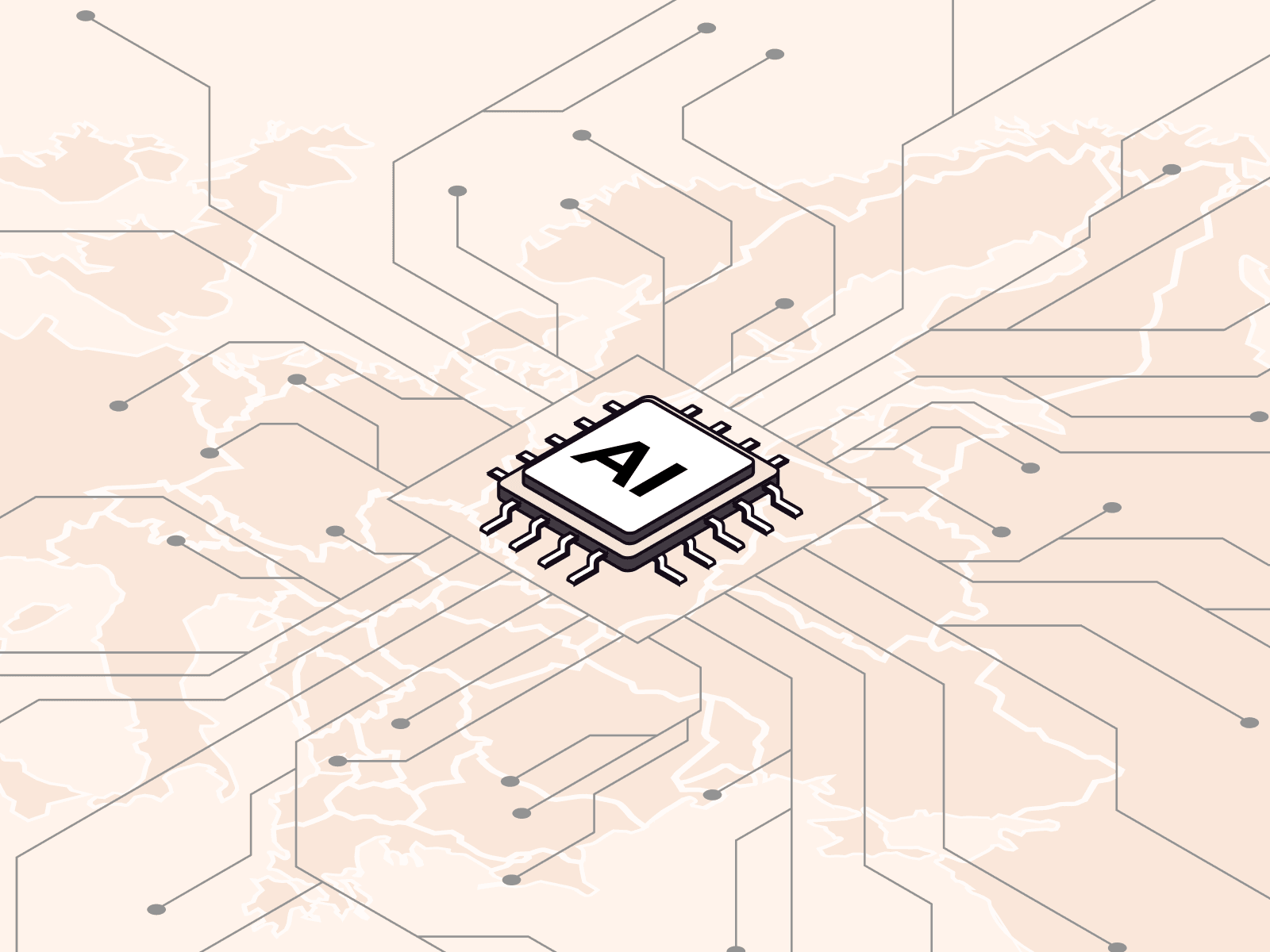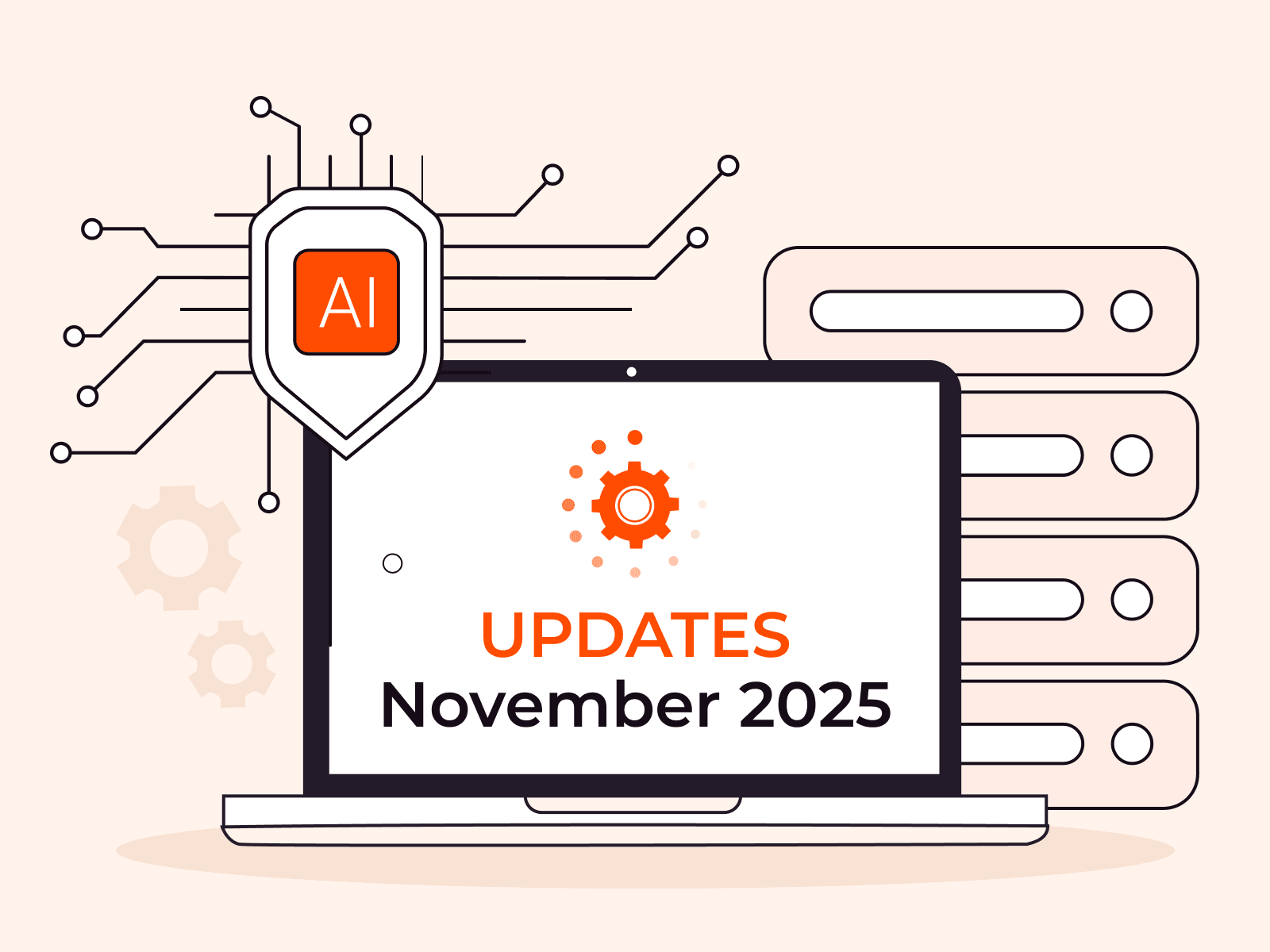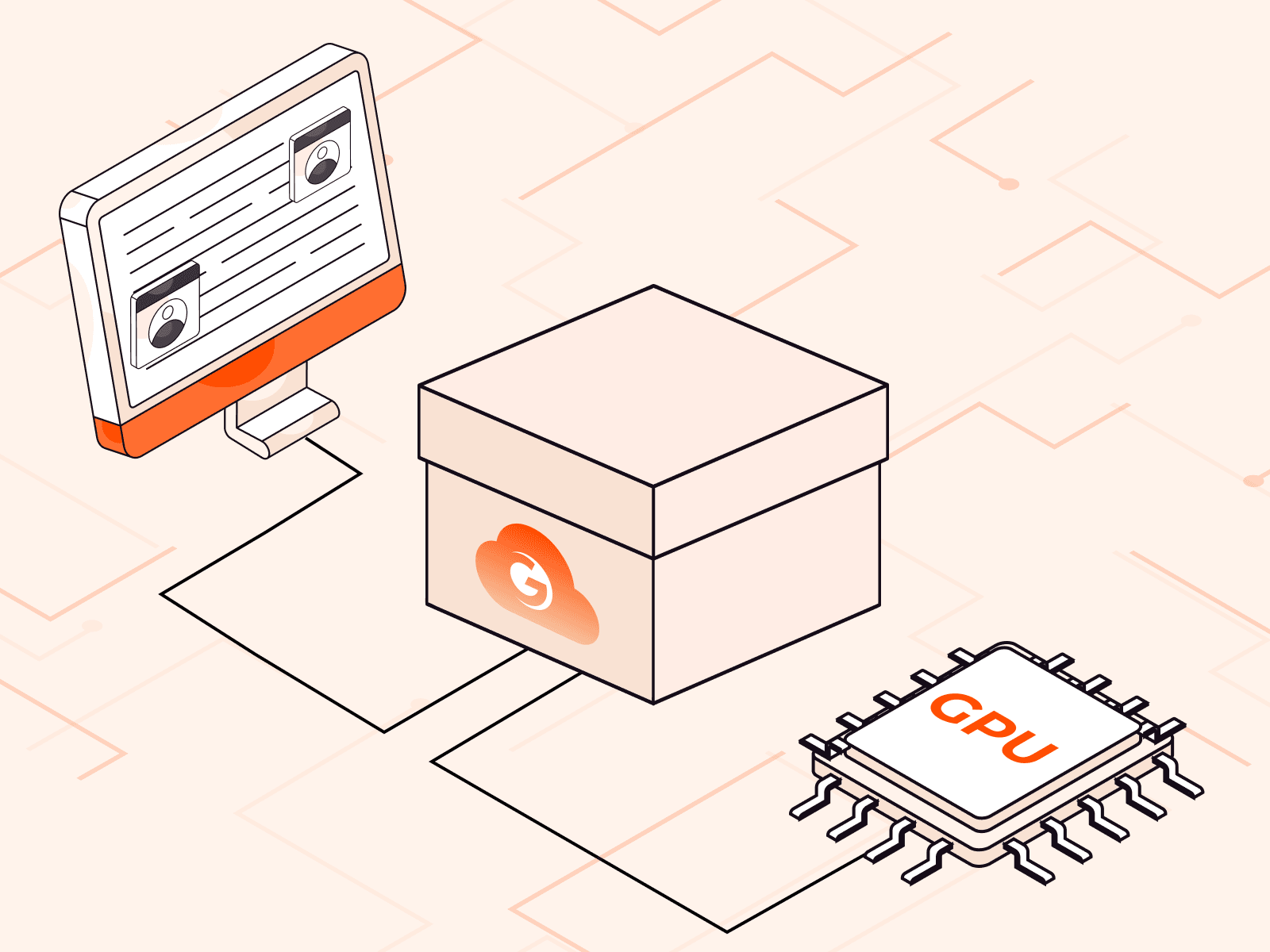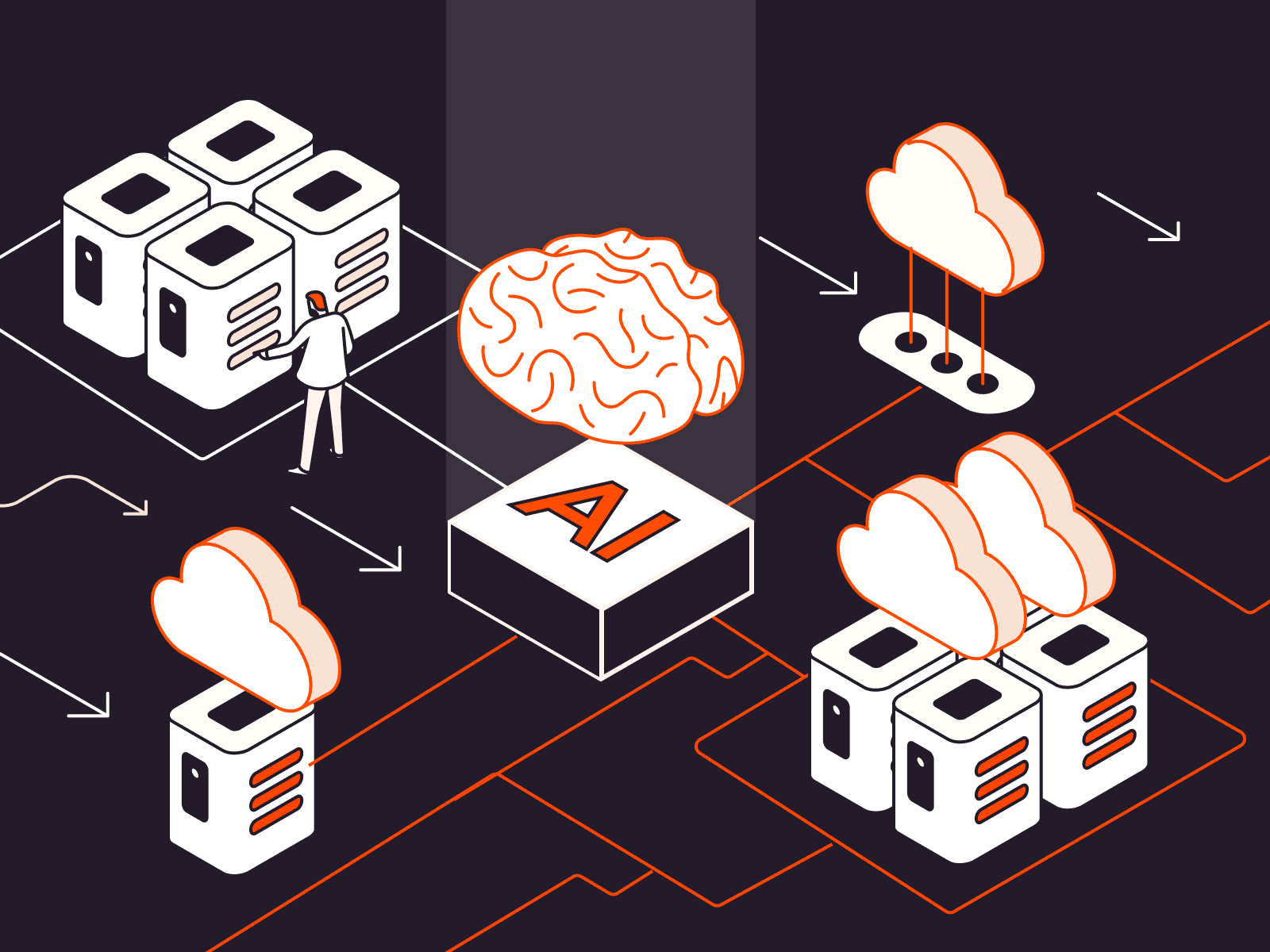Protecting networks at scale with AI security strategies
- July 17, 2025
- 3 min read

Network cyberattacks are no longer isolated incidents. They are a constant, relentless assault on network infrastructure, probing for vulnerabilities in routing, session handling, and authentication flows. With AI at their disposal, threat actors can move faster than ever, shifting tactics mid-attack to bypass static defenses.
Legacy systems, designed for simpler threats, cannot keep pace. Modern network security demands a new approach, combining real-time visibility, automated response, AI-driven adaptation, and decentralized protection to secure critical infrastructure without sacrificing speed or availability.
At Gcore, we believe security must move as fast as your network does. So, in this article, we explore how L3/L4 network security is evolving to meet new network security challenges and how AI strengthens defenses against today’s most advanced threats.
Smarter threat detection across complex network layers
Modern threats blend into legitimate traffic, using encrypted command-and-control, slow drip API abuse, and DNS tunneling to evade detection. Attackers increasingly embed credential stuffing into regular login activity. Without deep flow analysis, these attempts bypass simple rate limits and avoid triggering alerts until major breaches occur.
Effective network defense today means inspection at Layer 3 and Layer 4, looking at:
- Traffic flow metadata (NetFlow, sFlow)
- SSL/TLS handshake anomalies
- DNS request irregularities
- Unexpected session persistence behaviors
Gcore Edge Security applies real-time traffic inspection across multiple layers, correlating flows and behaviors across routers, load balancers, proxies, and cloud edges. Even slight anomalies in NetFlow exports or unexpected east-west traffic inside a VPC can trigger early threat alerts.
By combining packet metadata analysis, flow telemetry, and historical modeling, Gcore helps organizations detect stealth attacks long before traditional security controls react.
Automated response to contain threats at network speed
Detection is only half the battle. Once an anomaly is identified, defenders must act within seconds to prevent damage.
Real-world example: DNS amplification attack
If a volumetric DNS amplification attack begins saturating a branch office's upstream link, automated systems can:
- Apply ACL-based rate limits at the nearest edge router
- Filter malicious traffic upstream before WAN degradation
- Alert teams for manual inspection if thresholds escalate
Similarly, if lateral movement is detected inside a cloud deployment, dynamic firewall policies can isolate affected subnets before attackers pivot deeper.
Gcore’s network automation frameworks integrate real-time AI decision-making with response workflows, enabling selective throttling, forced reauthentication, or local isolation—without disrupting legitimate users. Automation means threats are contained quickly, minimizing impact without crippling operations.
Hardening DDoS mitigation against evolving attack patterns
DDoS attacks have moved beyond basic volumetric floods. Today, attackers combine multiple tactics in coordinated strikes. Common attack vectors in modern DDoS include the following:
- UDP floods targeting bandwidth exhaustion
- SSL handshake floods overwhelming load balancers
- HTTP floods simulating legitimate browser sessions
- Adaptive multi-vector shifts changing methods mid-attack
Real-world case study: ISP under hybrid DDoS attack
In recent years, ISPs and large enterprises have faced hybrid DDoS attacks blending hundreds of gigabits per second of L3/4 UDP flood traffic with targeted SSL handshake floods. Attackers shift vectors dynamically to bypass static defenses and overwhelm infrastructure at multiple layers simultaneously. Static defenses fail in such cases because attackers change vectors every few minutes.
Building resilient networks through self-healing capabilities
Even the best defenses can be breached. When that happens, resilient networks must recover automatically to maintain uptime.
If BGP route flapping is detected on a peering session, self-healing networks can:
- Suppress unstable prefixes
- Reroute traffic through backup transit providers
- Prevent packet loss and service degradation without manual intervention
Similarly, if a VPN concentrator faces resource exhaustion from targeted attack traffic, automated scaling can:
- Spin up additional concentrators
- Redistribute tunnel sessions dynamically
- Maintain stable access for remote users
Gcore’s infrastructure supports self-healing capabilities by combining telemetry analysis, automated failover, and rapid resource scaling across core and edge networks. This resilience prevents localized incidents from escalating into major outages.
Securing the edge against decentralized threats
The network perimeter is now everywhere. Branches, mobile endpoints, IoT devices, and multi-cloud services all represent potential entry points for attackers.
Real-world example: IoT malware infection at the branch
Malware-infected IoT devices at a branch office can initiate outbound C2 traffic during low-traffic periods. Without local inspection, this activity can go undetected until aggregated telemetry reaches the central SOC, often too late.
Modern edge security platforms deploy the following:
- Real-time traffic inspection at branch and edge routers
- Behavioral anomaly detection at local points of presence
- Automated enforcement policies blocking malicious flows immediately
Gcore’s edge nodes analyze flows and detect anomalies in near real time, enabling local containment before threats can propagate deeper into cloud or core systems. Decentralized defense shortens attacker dwell time, minimizes potential damage, and offloads pressure from centralized systems.
How Gcore is preparing networks for the next generation of threats
The threat landscape will only grow more complex. Attackers are investing in automation, AI, and adaptive tactics to stay one step ahead. Defending modern networks demands:
- Full-stack visibility from core to edge
- Adaptive defense that adjusts faster than attackers
- Automated recovery from disruption or compromise
- Decentralized detection and containment at every entry point
Gcore Edge Security delivers these capabilities, combining AI-enhanced traffic analysis, real-time mitigation, resilient failover systems, and edge-to-core defense. In a world where minutes of network downtime can cost millions, you can’t afford static defenses. We enable networks to protect critical infrastructure without sacrificing performance, agility, or resilience.
Move faster than attackers. Build AI-powered resilience into your network with Gcore.
Check out our docs to see how DDoS Protection protects your network
Related articles
Subscribe to our newsletter
Get the latest industry trends, exclusive insights, and Gcore updates delivered straight to your inbox.






